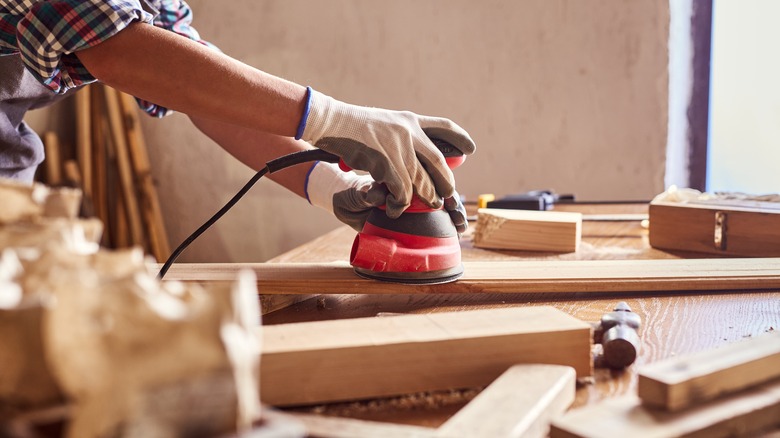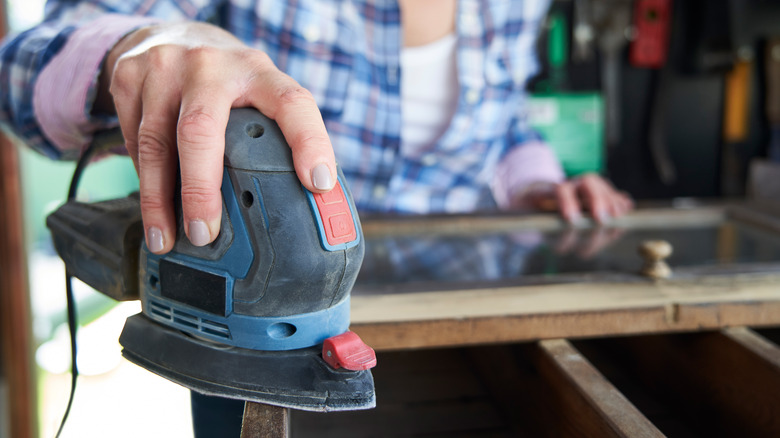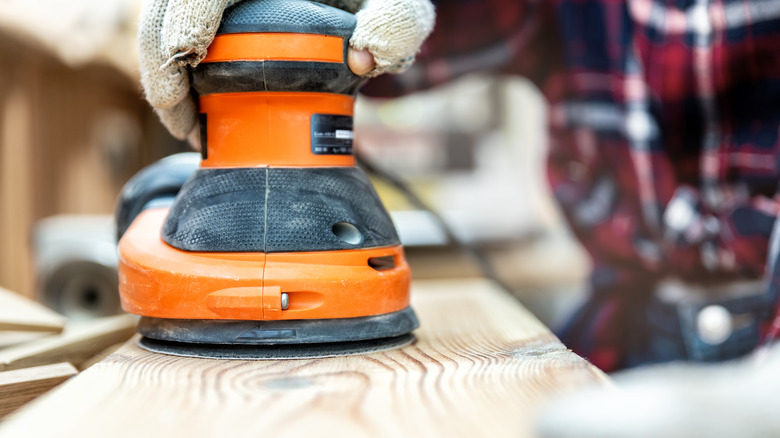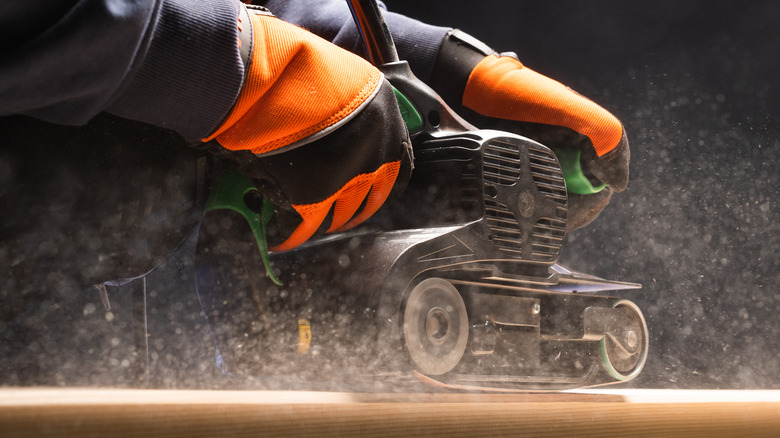What's The Difference Between Belt, Orbital & Palm Sanders?
The nice thing about working with wood for DIY projects versus metal or masonry is that wood is relatively softer and lighter. You can lift a chunk of wood with just your hands, combine boards together with just a hammer and some nails, and you don't need to worry about risks like heat or fire. The only aspect of woodworking that may require a bit more muscle is stripping off any rough, unprocessed edges. You can't build a shelf with raw wood, after all, unless you want everyone who walks by to catch a splinter.
When it comes to making things smoother, the woodworker's weapon of choice is the sander. Technically, you could accomplish the same task with a strip of sandpaper, but that would be difficult and take forever, whereas using a powered sander allows you to smooth out your working wood with a fraction of the time and effort. Before you run off to your local Harbor Freight to grab the first attractive sander you see, though, you should first know the differences between the three major sander types: belt sanders, orbital sanders, and palm sanders. Getting the right sander could mean the difference between a smooth, pleasant finish on your wood project and a pile of sawdust where it used to be.
How to use a palm sander
The smallest and simplest implement in the sander trio is the humble palm sander. As the name implies, palm sanders are powered sanders intended to be small enough to fit comfortably in one hand while in use. When activated, the base of the palm sander vibrates at high speed which, when combined with the mounted sanding pad, allows you to swiftly grind imperfections off of wooden surfaces.
Due to their small size and focused vibrations, palm sanders are good for small-scale jobs. For example, if you made an entire kitchen table from scratch but spotted a small rough patch on one of the corners after the fact, you can use a palm sander to quickly rub it off. The particular shape of the sanding pad on a palm sander also makes it handy for reaching into tight corners that other sander types might not be able to reach.
Do note, though, that a palm sander isn't usually enough to handle a full-scale sanding job solely. The vibrations are too focused to effectively smooth out a large surface, and it can be difficult to sand consistently across the whole thing. Use a palm sander to deal with small imperfections at the tail end of a sanding job, prior to painting or staining.
What is an orbital sander?
The next step up from a palm sander, and one of the most common types of powered sander, is the orbital sander. At a glance, orbital sanders may seem similar to palm sanders, as they're often small enough to hold either in your hand alone or in a grip. The big difference is the base of the sander. Rather than the pointed pads used by palm sanders, orbital sanders use special circular sanding pads that hook onto a round base.
When an orbital sander is powered, with a cord or a battery, such as Ryobi's orbit sander, the base simultaneously spins and oscillates at high speed. These motions not only grind imperfections out of wooden surfaces but spread the pressure around in a large area. This helps to keep the sanding consistent across a wider area, preventing one part of the surface from getting sanded down more than others. You might get some small swirl patterns on wood with a cheap orbital sander, but high-quality ones are engineered to prevent this.
Orbital sanders are excellent all-around tools, great for buffing flat, wooden surfaces of varying sizes. Besides sanding out imperfections, the rotational motion also makes orbital sanders great for stripping damaged paint and varnish from old walls, doors, and furniture. It can even be used for a bit of rust stripping, provided the sander and its pad are resilient enough.
What about belt sanders?
If you've got a huge sanding job in front of you, you need the biggest, toughest sanding tool — the belt sander. Belt sanders are the king of sanding tools, guaranteed to strip the rough parts off even the largest, burliest chunks of wood. Rather than the small sanding pads used by palm and orbital sanders, belt sanders are equipped with large sanding belts wrapped around engine-powered drums. When activated, these belts rotate at high speed, swiftly grinding down anything they touch.
Belt sanders are the tool of choice for large-scale sanding on equally large objects. For instance, if you were sanding down an entire pallet of boards to make wooden flooring or furniture, the belt sander would be the tool to use. Belt sanders come in two major variations, handheld and stationary — handheld sanders are great for larger slabs of wood that are too heavy to simply lift, while stationary sanders can be mounted onto a workbench, allowing you to bring the wood to them instead.
As the most powerful sander of the trio, belt sanders are not intended for small, precision sanding jobs. Even just a few seconds of contact with a belt sander can grind small objects into dust, so use one of the other sander types if you need careful work done.



